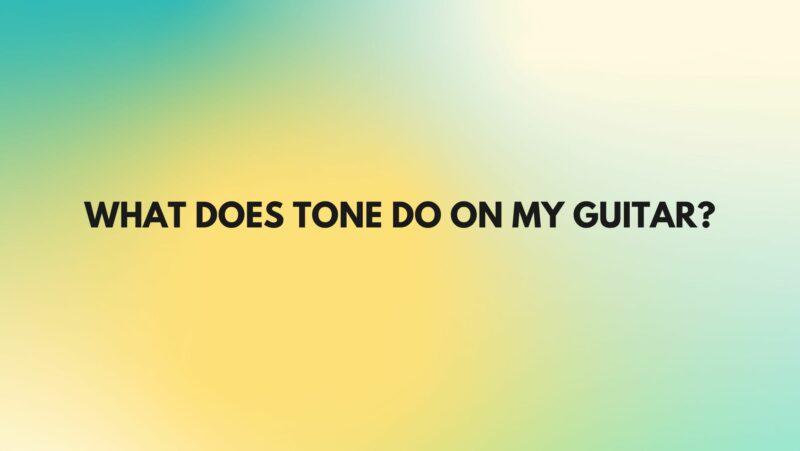The world of electric guitars is a realm filled with knobs, switches, and settings, each offering a unique way to shape your instrument’s sound. Among these controls, the tone knob holds a special place. It’s a feature found on virtually all electric guitars, and yet, many players aren’t entirely sure of its purpose or how to wield its power. In this comprehensive article, we’ll unravel the mysteries of the tone control on your guitar, exploring its function, impact on your sound, and creative potential.
The Anatomy of a Guitar’s Tone Control
Before delving into the intricacies of what the tone control does, let’s establish its physical presence on your guitar. Typically, an electric guitar’s control layout includes:
- Volume Control: Adjusts the output level of your guitar, determining how loud or quiet it is.
- Tone Control: Often represented as a knob or a dial, the tone control is responsible for shaping the tonal character of your guitar’s sound.
The Role of the Tone Control
Now, let’s uncover the primary role of the tone control on your guitar:
- Treble Roll-off: The most fundamental function of the tone control is to roll off or reduce the treble frequencies in your guitar’s signal. Treble frequencies are the high-pitched tones that give your sound brightness and sharpness.
- Shaping Tonal Character: By turning the tone control, you can adjust the balance between treble and bass frequencies in your guitar’s sound. This shaping capability allows you to tailor your tone to suit different musical contexts and personal preferences.
How Does the Tone Control Work?
The tone control achieves its function through a passive electrical circuit. Here’s how it works:
- Capacitor Filtering: Inside your guitar’s tone control circuit, there’s a capacitor connected in parallel with your pickup. This capacitor acts as a filter, allowing certain frequencies to pass through while blocking others.
- Rolling Off High Frequencies: When you turn down the tone control, it increases the amount of treble frequencies that are shunted to ground, effectively reducing their presence in your guitar’s signal. This results in a warmer and mellower sound.
- Maximum Treble: With the tone control turned all the way up (at its maximum setting), the capacitor’s effect is minimal, allowing a full range of frequencies to pass through. This yields a bright and clear tone, emphasizing the treble frequencies.
Creative Uses of the Tone Control
Now that you understand how the tone control works, let’s explore some creative ways to utilize it:
- Warm-Up Your Sound: When you want a mellower, jazzier tone, roll off the tone control to reduce the treble and create a smoother, less piercing sound.
- Tame Harsh Distortion: In high-gain scenarios, turning down the tone control can help tame harshness and reduce unwanted noise, producing a smoother distortion or overdrive sound.
- Brighten Up Clean Tones: For clean, articulate tones with a hint of sparkle, turn up the tone control to accentuate the treble frequencies.
- Tailor Tones to Genres: Different music genres often call for specific tonal characteristics. Experiment with your tone control to find the right sound for blues, rock, jazz, or any style you’re playing.
Conclusion
The tone control on your guitar is a powerful tool for shaping your sound. It allows you to roll off treble frequencies, creating warmer and mellower tones, or boost treble for brightness and clarity. Understanding how to use the tone control effectively can enhance your playing versatility, enabling you to adapt your guitar’s sound to suit various musical genres and artistic expressions. Embrace the magic of the tone control, and let it be your sonic paintbrush in the world of music.


